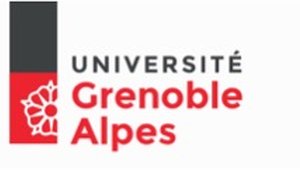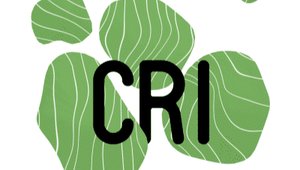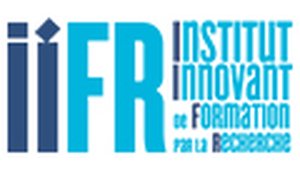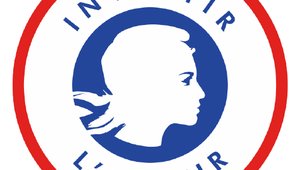Smartphone Pocket Lab: Experimental Classical Mechanics
- Duration: 9 weeks
- Effort: 36 hours
- Pace: ~4 hours/week
- Languages: English
Description
In the MOOC "Smartphone Pocketlab", you do real physics experiments at home and you learn scientific description of movement : speed, acceleration, trajectory...
The needed equipment is a smartphone and a laptop. This is all.
The proposed experiments explore the concepts presented in the course 'Classical Mechanics' that is taught in all universities. They introduce participants to a scientific description of motion by doing themselves experiments at home (no lab required).
The experiments are organised in 5 sessions: the pendulum (S3) and the free fall (S1) with illustrations directly from Galileo and Newton, while the Session 2 (S2) deals with rotation and Session 4 (S4) with oscillations and vibrations.
In Session 5 (S5), you do your own experiment: you can study trajectory of a bicycle, of a train. As an example, we show you how to quantitatively study the trajectory, speed and acceleration of a tramway. New ideas welcomed.
Smartphone Pocket Lab is a “Learning by doing” course. The needed lab is your smartphone
Doing experiments in Classical Mechanics is the objective. It is a "Do It Yourself (DIY)" strategy.
Classical Mechanics is a scientific course on motion, trajectory, displacement. It is a first year course taught in all universities in the world to all students in sciences and technology.
Studying Classical Mechanics requires to do experiments. Proposed experiments are related to major chapters of the course “Classical Mechanics”.
The scientific method involves facing reality in details to obtain a precise and meaningful description of the probed concepts. This is at the heart of the scientific experimental method as it is developed in laboratories.
Here the lab is your smartphone connected to your laptop.
No other material or scientific instrument is needed.
The scientific approach of motion has always been of key importance.
In modern societies, it is probably even more relevant in many fields including design, arts,…
Use of smartphone opens new opportunities to explore movements including movements of body and gestures. In fact, we never notice it but this is what smartphones are measuring all time during their use in everyday life.
Smartphones when used as labs are so powerful that they enable students to define new experiments. Your ultimate success if your enter this course would be that the experiment you propose in session 5 is a surprise for the Course Staff and for others students.
Through our free and open software iMecaProf, movements of a smartphone are measured and interactively represented in real time using the associated audio-visual interface. This is a newly developed tool to enter exploration of scientific concepts, which describe all kind of movements. It is a pedagogical tool developed for both scientists and non-scientists.
Format
The course is structured in 10 weeks.
It is built in five sessions (one every two weeks)
Prerequisites
It is perfect if you have scientific knowledge needed to enter university.
If this knowledge is not complete or partially lost or somewhat old, we shall propose you a qualitative approach.
This qualitative approach is based on the use of a real time and interactive representation on your laptop screen of measured data. This representation is based on our open source software iMecaProf.
You can therefore do experiments following two different strategies:
Strategy 1:
You are interested by playing with scientific concepts associated to motion, but not necessarily by entering a full quantitative data treatment.
The strategy 1, firstly based on this qualitative approach is what you are looking for. This is made possible using iMecaProf. For example, you shall control by hand a pendulum (The smartphone is hanging from its charging cable whose USB connector, the upper extremity, is held by your hand). To do so you shall use real time information on laptop screen as a dashboard. Part of this qualitative strategy of learning is based on games.
Strategy 2:
You want to have first this qualitative approach to play with your smartphone and with key concepts associated for example to energy conservation.
But you also want to do a full quantitative analysis of real data collected during your experiment, then we have built for you a second strategy.
In strategy 2, first you play with physics as in strategy 1, but when you are happy with qualitative control of experiment, you save data in a .csv file that can be transfered in any spreadsheet such as Excel. In that case, you will learn to do experiments and to treat the collected data by smartphone sensors using Classical Mechanics at the level required by most universities in first year. In order to do quantitative data treatment, we shall use of a spreadsheet such as Excel. This can be learnt during the course
Assessment and certification
Peer assessment:
for each session, participants will produce documents analysed by others participants.
Experimental research is an activity where collective intelligence is of primary importance: participants are welcome to team in groups of two or three.
In order to complete participation to the course, each group is expected to produce 5 files, one for each session.
Files can contain written documents, images or videos. It is important that all documents in a file consist in a coherent and relevant description of the achieved experimental work (especially in the description of failures and difficulties which can be turned into successes if thoroughly analysed).
Ten "Smartphone Pocket Lab" Medals will be awarded.
Nine prizes will be awarded after a vote of the participants. Three aspects will be considered with three awards for each. The last price is the "Magic Wand Medal" awarded by the CRI Paris.
Bronze Medal :
Three prices for “Best science with a smartphone”.
According to participants, they are the three best experiments done in sessions 1, 2, 3 or 4, which gather key experiments in Classical Mechanics.
Key points that will be considered are: i) best experiment set up and measurement strategy, ii) best precision achieved, iii) best description so that others students can also analyse results and reproduce the experiment.
Silver Medal:
Three prices for “Most original experiment done with a smartphone”.
According to participants, they are the three most original experiments done in session 5: Smartphones embeds many instruments such as accelerometer, gyroscope, compass, LED, cameras, proximity sensor, NFC, microphone, loudspeaker and more coming each year. Combinations of all these facilities open original perspectives for scientific experiments.
Most original experiments will be the ones that combine scientific quality as expected for Bronze Medal but are also, and most importantly, a real surprise for others participants
Gold Medal:
Student production can be the new session to be included in the course next year. Three prices are awarded for “Best contribution to the course”.
According to participants, these contributions should be included in the course as new sessions or at least as new proposals in session 5.
They of course need to combine qualities expected for Bronze and Silver Medal: scientific quality and originality. On the top of that, they should open a door for a new pedagogical use of smartphone. If they are scientifically based, these pedagogical propositions and the way they use smartphones, can be related to any field of knowledge and a proposal for any public such as non-scientists following this course.
Magic Wand Medal:
This price is awarded by the Centre Interdisciplinaire de Recherche (CRI Paris).
It is a single price for the “Best educative contribution using a smartphone”.
Any kind of proposal and result using smartphone sensors to explore the world, to communicate… Members of the CRI Paris will appreciate if it is potentially a breakthrough in the educative use of smartphones.
Course plan
It is built in five sessions (one every two weeks):
- Free fall and 1D motion (start, move an stop)
- Circular motion
- Pendulum
- Mechanical oscillations
- Motion in real life: train, bicycle,...
Course team
JOEL CHEVRIER
Categories
Organizations
Partners

UGA
Ce cours en ligne est issu d'un enseignement expérimental au Département de Licence Sciences et Tech de UGA et développé au CIME Nanotech

CRI PARIS
Ce cours est financé sur le programme Mooc Factory soutenu par la Mairie de Paris et mis en oeuvre par SCIRE.

IIFR
Ce cours est financé sur le programme d'Investissements d'Avenir lancé par l'Etat et mis en oeuvre par l'ANR au travers du projet IDEFI.

IDEFI
Le programme Investissement d'Avenir finance l'IDEX Sorbonne Paris Cité et le projet IIFR.
Social Networks
License
License for the course content

Attribution-NonCommercial-NoDerivatives
You are free to:
- Share — copy and redistribute the material in any medium or format
Under the following terms:
- Attribution — You must give appropriate credit, provide a link to the license, and indicate if changes were made. You may do so in any reasonable manner, but not in any way that suggests the licensor endorses you or your use.
- NonCommercial — You may not use the material for commercial purposes.
- NoDerivatives — If you remix, transform, or build upon the material, you may not distribute the modified material.
License for the content created by course participants

Attribution-NonCommercial-NoDerivatives
You are free to:
- Share — copy and redistribute the material in any medium or format
Under the following terms:
- Attribution — You must give appropriate credit, provide a link to the license, and indicate if changes were made. You may do so in any reasonable manner, but not in any way that suggests the licensor endorses you or your use.
- NonCommercial — You may not use the material for commercial purposes.
- NoDerivatives — If you remix, transform, or build upon the material, you may not distribute the modified material.


